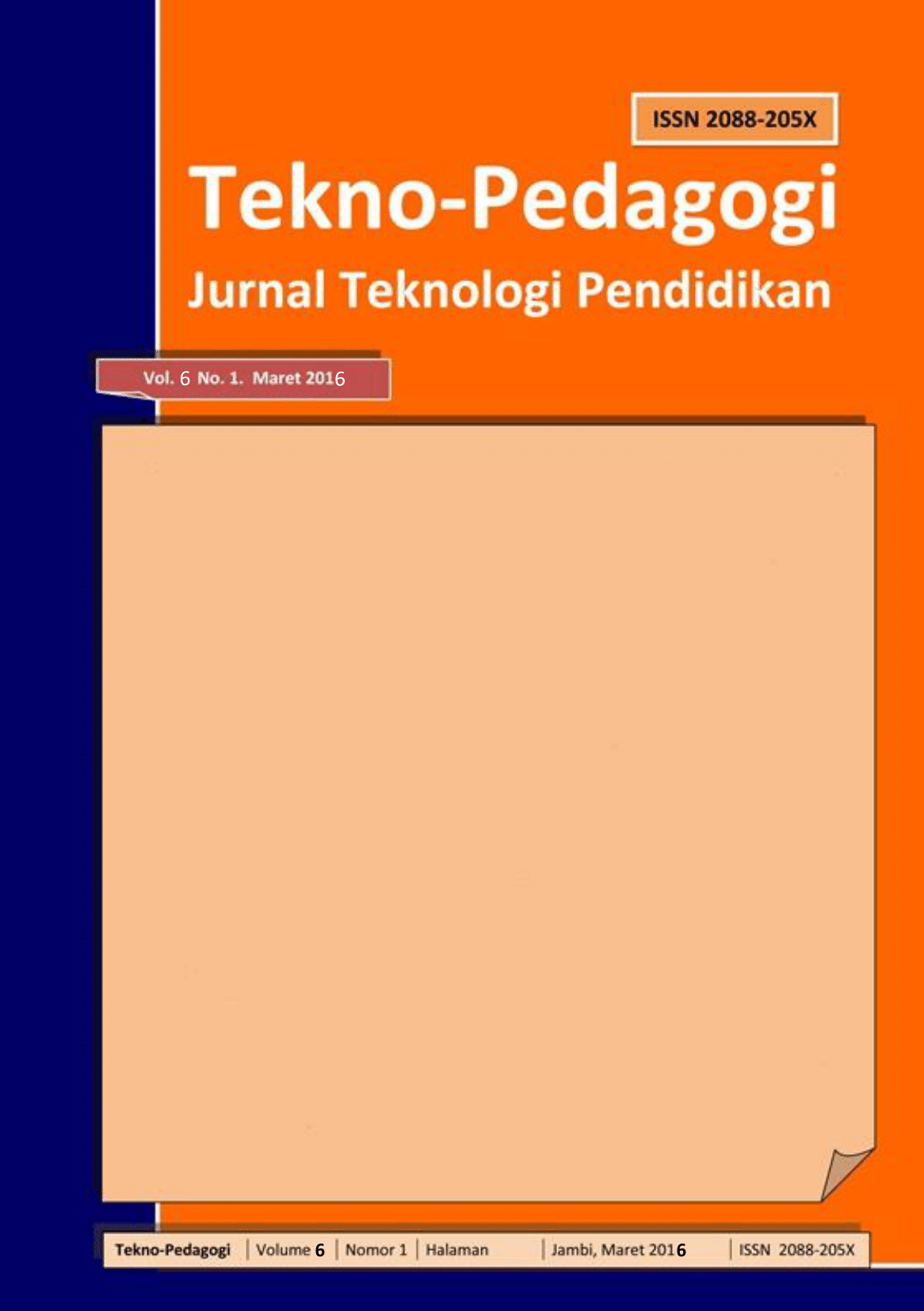Development of a Professional 3D Pageflip Based E-Module on Radioactivity Material
DOI:
https://doi.org/10.22437/teknopedagogi.v6i1.7503Keywords:
3D Pageflip Professional, Electronics module, Nuclear Reactions, RadioactivityAbstract
This research aims to determine the final product of a professional 3D Pageflip-based electronic module on radioactivity and nuclear reactions in the Atomic and Nuclear Physics course. This research is research and development research with a 4D development model. The stages in the 4D model development model are define, design, development, and disseminate. The research instruments used were observation, document review, student needs questionnaire, media expert validation questionnaire, and material expert validation questionnaire. Then the resulting data was analyzed using descriptive statistics. The resulting product has specifications including the final format of the program is exe, the program is equipped with colors, images, animation and video using Times New Romans font type, the module consists of an introductory, learning and closing section which includes material namely radioactivity and nuclear reactions and the level of media users, namely universities. The advantages of the electronic module include the language used which is easy to understand, the videos displayed are in 3D format, there is a separate answer sheet for answering practice questions and conclusions. Can be used remotely, students can see the scores obtained from the final test and can be used directly without having to have the application.
Downloads
References
Amalia, R. 2015. Development of an Electronic Smart Book (BPE) Based on 3D PageFlip on the Theme of My Dreams for Class IV at SD IT Al-Kamilah I Banyumanik. Semarang: Semarang State University.
Beiser, A. 1986. Modern Physics Concepts. Jakarta: Erlangga. Daryanto. 2013. Compiling Modules. Yogyakarta: Gava Media.
Ministry of National Education. 2008. Guide to Teaching Material Development. Jakarta: Directorate of Senior High School Development.
Ministry of National Education. 2008. Module Writing. Jakarta: Directorate General for Improving the Quality of Educators and Education Personnel.
Kuswandari, M. 2013. Development of High School Physics Teaching Materials with a Contextual Approach to Physical Quantity Measurement Material. Journal of Physics Education. Vol. I. 2013.
Putra, K. W. B., Wirawan, I. M. A., & Pradnyana, G. A. (2017). Development of an E-Module Based on the Discovery Learning Learning Model in the Subject "Computer Systems" for Class X Multimedia Students at SMK Negeri 3 Singaraja. Journal of Technology and Vocational Education, 1(14), 40-49.
Rachmah, A., Rosha, J. M., & Vani, N. D. (2017). Development of a Professional 3D Pageflip Based Electronic Module on Business and Energy Materials. Jakarta: Jakarta State University.
Setyosari, P. 2015. Education & Development Research Methods. Jakarta: Prenamemedia Group.
Sugiyono. 2016. Statistics for Research. Bandung: Alphabeta.
Sukmadinata, N.S. 2013. Educational Research Methods. Bandung: PT. Rosdakarya Teenager.
Syahrowardi, TS. & Permana, A. H. (2016). "Design multimedia handouts using professional 3D pageflip for learning media on the Android system." Journal of research & development in physics education, 1(2).
Thiagarajan. 1974. Instructional Development For Training Teachers of Exceptional Children. Indiana University: Indiana.
Utami. A., & Syahri. M.W. (2007). Development of Metacognition-Based E-Book Teaching Materials Using 3D Pageflip on Chemical Bonding Material for Class X MIPA Sma Negeri 1 Muaro Jambi. Scientific articles.
Widoyoko, S. E. P. 2016. Techniques for Preparing Research Instruments. Yogyakarta: Learning Library.
Downloads
Published
How to Cite
Issue
Section
License
Copyright (c) 2016 Saputri Saputri, Nyi Imasari

This work is licensed under a Creative Commons Attribution 4.0 International License.





